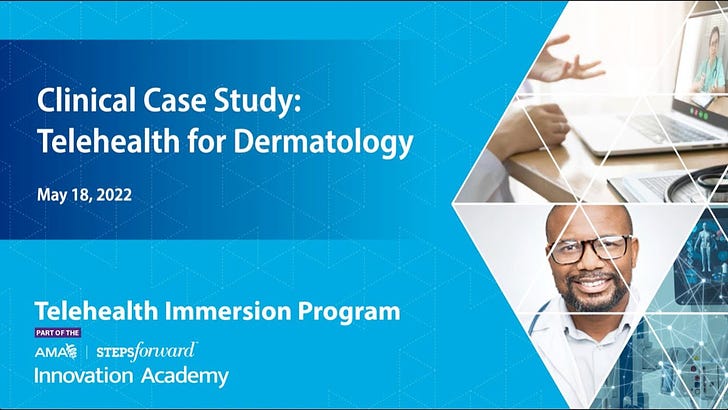Barriers to atopic disease care in the Northwest Territories
Socioeconomic factors are driving up the prevalence of allergic conditions in Northern Canada, but long distances and a lack of testing facilities make management difficult (1,700 words, 8 minutes)
The Skin Spectrum Weekly e-newsletter is backed by unrestricted support from Bausch Health Canada
Northern Indigenous communities have a higher prevalence of skin and other allergic conditions as well as limited access to testing and treatments, Dr. Kun Tian said in a presentation at the 2nd annual Indigenous Skin Spectrum Summit on June 11, 2022.
Dr. Tian is an internal medicine specialist, allergist and clinical immunologist who practices in Toronto and regularly travels to Yellowknife, Northwest Territories to practice medicine.
The burdens of dermatitis and asthma are more prevalent in First Nations communities, said Dr. Tian. Among the Inuit, eczema is more persistent in children and tends to be more severe.
With asthma, Dr. Tian noted that a recent study shows that the prevalence of asthma is 5% higher in Aboriginal populations than in non-Aboriginals. First Nations children who live off reserves and in less remote communities have a lower prevalence of asthma. That seems to indicate genetic factors are not the main drivers of this difference.
With these higher prevalences, patients often face significant challenges in managing their atopic conditions effectively.
Dr. Tian said transportation is a significant problem in northern communities, especially in winter. Most winter travel must be by plane, which makes it difficult to see a specialist or even a general practitioner. Patients often must travel south to cities such as Calgary or Edmonton for specialty care.
Doing skin tests can also be difficult, he said.
“We just do not have skin test facilities out there [in Yellowknife],” said Dr. Tian. Even if a test facility is available, physicians “are looking at patients from all the territories and Nunavut." Patients are reluctant to make such a long trip just for a skin test, he said.
As a result, physicians sometimes must instead order serology immunoCAP tests, said Dr. Tian. These tests are less comprehensive and are also more expensive.
He said it is not possible to do a full pulmonary function test for asthma patients because of the lack of resources. And with other tests, it may be necessary to coordinate with the lab service first. There may also be delays before the lab can provide results since samples may have to be transported to other cities.
Dr. Tian said access to many treatments is also an issue, even for over-the-counter moisturizers.
“The biggest city in the Northwest Territories only has one Shoppers [Drug Mart],” he said. “Imagine the small communities. How would you get access to the over-the-counter moisturizers and sunscreens?”
Other barriers to effective care of atopic conditions in remote and Indigenous communities include:
A lack of clear information on channels to obtain and co-ordinate biologic therapy
A resident physician shortage may mean a new practitioner conducts each follow-up
Language barriers and a lack of community medical education can impair patient self-treatment and medication compliance
Bottom Line: There is a higher prevalence of dermatitis in northern Indigenous communities, driven by environmental and social factors rather than genetics. There is limited research and limited access to testing and treatments. Even obtaining products such as moisturizers can be difficult. More education is needed in northern communities to help patients become more knowledgeable.
From the literature on atopic disease
Structural racism and its pathways to asthma and atopic dermatitis
The authors of this paper note that much of the existing literature exploring the disproportionate burden of atopic disease in populations with skin of colour has focused on environmental exposures and biomechanistic differences between populations.
While valuable knowledge can be gained from that research, they write, those studies have disregarded the complexity of interactions across biologic and structural factors, including the effects of structural racism. The authors define structural racism as the totality of ways society fosters discrimination by creating and reinforcing inequitable systems through intentional policies and practices sanctioned by government and institutions.
In this review, the authors present a conceptual framework and reference the literature to demonstrate how structural racism is a root cause of atopic disease disparities. They identify residential segregation, socioeconomic position, and mass incarceration as contributors to aberrations in the innate and adaptive immune response and amplifying physiologic stress responses.
Atopic dermatitis and skin infections are a poorly documented crisis in Canada's Indigenous pediatric population: It's time to start the conversation
In this commentary, the authors discuss factors contributing to the health disparities experienced by Indigenous youth in Canada. These include mental health crises, high suicide rates, food insecurity, racism, lower caregiver employment rates, lower education levels and decreased healthcare access.
Notably, they call out the discrepancy that while Canada consistently has top placement in the UN Human Development Index, Canadian Indigenous peoples rank 78th on the same scale.
The authors discuss barriers to treatment, including systemic and institutional racism, poverty, crowded housing conditions on reserves, access and cost of basic skin care regimens, and clean water access.
Inter-rater variability in patch test readings and final interpretation using store-forward teledermatology
This study aimed to compare patch test readings and final interpretations between two in-person dermatologists and eight teledermatologists.
Investigators collected photographs from patients who were patch tested with 70 screening series of allergens. They took the images at the first reading, 48 hours after patch removal, as well as at the second reading a few days later.
The eight teledermatologists then reviewed photos, graded the reactions, and recorded their final interpretations. They also rated the overall image quality and the confidence level for each patient and patch test reaction. The researchers then calculated the percentage agreement between the teledermatologists and in-person dermatologists based on clinical significance.
Compared to the in-person dermatologists, the teledermatologists had a high rate of failure. The authors conclude their findings show significant limitations to using teledermatology for patch testing.
Feasibility and implementation of portable confocal microscopy for point-of-care diagnosis of cutaneous lesions in a low-resource setting
This paper describes developing and testing a low-cost, smartphone-based confocal microscope for imaging skin lesions at the point of care in settings with low resources.
The device was tested in 363 HIV-infected Ugandan patients with Fitzpatrick skin types 5 or 6 and suspected Kaposi sarcoma. Researchers imaged lesions in vivo with the device and excised biopsies ex vivo. Phlebotomists (52% of samples), nurses (14%), or physicians (34%) performed the imaging.
The authors identified several limitations that made successful in vivo imaging difficult. They said that ensuring stability between the skin and the objective lens was challenging. Light scattering in dark skin made cellular imaging possible only in the epidermis and the junction between the dermis and epidermis.
The ex vivo imaging was less limited by skin tone and provided enough resolution and contrast to visualize cellular features in 185 patients.
All the health workers found the device reasonably easy to use, and the cost was US$4,200—10 to 20 times less than a standard confocal microscope.
VIDEO: Clinical Case Study: Telehealth for Dermatology
At the intersection of skin and society
The University of Prince Edward Island (UPEI) has instituted a new policy that, to graduate, all students must complete a course in Indigenous studies.
According to a report from CBC News, the course is part of the university's newly established Faculty of Indigenous Knowledge, Education, Research, and Applied Studies (IKERAS). Students will begin taking the course titled Indigenous Teachings this fall.
In an interview with the news outlet, UPEI assistant professor David Varis, a Cree member of the UPEI Indigenous Circle, says the course will cover Indigenous history, cultures, and practices. Other topics include the history of residential schools and the intergenerational trauma they caused.
"However, we also talk about healing. And we talk a little bit about what's taking place across Turtle Island Indigenous Peoples, and how they're reclaiming their cultures," Varis said.
Varis told the news outlet that both the new mandatory course and the IKERAS faculty were products of the university working to find ways to support the calls to action by the 2015 Truth and Reconciliation Commission.
"By just having a mandated course around Indigenous knowledge of peoples and their cultures, I believe that we are teaching responsible citizenship," he said.
This week
August is Summer Sun Safety Month in the U.S.
Aug. 15 is Indian Independence Day
Aug. 19 is World Humanitarian Day
Something to think about in the week ahead. . .
Next week
Dr. Gary Sibbald discussed the challenge of diabetic ulcers in Indigenous communities in Canada during the 2022 Indigenous Skin Spectrum Summit. As well as talking about the factors contributing to this consequence of rising diabetes rates, Dr. Sibbald also mentioned resources available to medical practitioners and patients that can help manage this issue in Indigenous communities.
This Wednesday, don’t miss an important annual learning opportunity
Registration is open for the 2022 Summer of Dialogue: Focus on Black Skin, which will be held virtually on Wed. August 17, 7:00 PM to 8:30 PM EDT.
In recognition of persistent gaps in dermatologic training regarding skin of colour, the Summer of Dialogue colloquium, Focus on Black Skin, will discuss recent progress on advancing the inclusion of diverse skin tones in research and medical education.
This 90-minute live discussion will address treatment challenges specific to Black skin (Fitzpatrick Types V & VI), including phenotypic variations from standard training models and the necessity of cultural competence.
This non-accredited program will be available to attend at no charge, thanks to the support of our sponsors.
Highlights of the event include:
The Dr. Mercy Alexis Keynote Lecture: Gaps in Aesthetic Treatment for Richly Pigmented Skin by Dr. Pearl Grimes of Los Angeles
Moderator: Dr. Andrew F. Alexis
Educating new and existing HCPs on optimal skincare for Black patients
Register for the 2022 Summer of Dialogue: Focus on Black Skin here:
Registration is open for the 8th annual Skin Spectrum Summit. This all-day hybrid event will be held on Saturday, Sept. 17, 2022, from 8:00 a.m. to 4:30 p.m. EDT. Delegates can attend the Summit in person at the Chestnut Conference Centre in Toronto, and the presentations will also be viewable virtually through a webinar platform.
The Skin Spectrum Summit is a landmark educational congress of healthcare professionals dedicated to providing better dermatologic care for Canada's diverse population.
The conference provides education on treating patients across all six Fitzpatrick skin types, emphasizing care for Types IV-VI.
Presentations at the 8th annual Skin Spectrum Summit include:
Psoriasis in skin of colour
Acne in skin of colour
Atopic dermatitis in skin of colour
Pediatric dermatology for skin of colour
Skin cancer in skin of colour
Wound care for skin of colour
Skin conditions in Indigenous communities
Advancing diversity in dermatologic education
Differential diagnosis and cultural competence
Read Skin Spectrum Weekly for updates on Summit faculty and programs.
Register for the 8th annual Skin Spectrum Summit here:
If you like Skin Spectrum Weekly, why not check out our other publications, podcasts and portal?
Established in 1995, The Chronicle of Skin & Allergy is a scientific newspaper providing news and information on practical therapeutics and clinical progress in dermatologic medicine. The latest issue features:
A report on the impact of acne scars on patient quality of life, with Dr. Jerry Tan of Windsor, Ont.
How new innovations in cosmetic dermatology can contribute to patient satisfaction, featuring interviews with Dr. Fred Weksberg (Toronto), Dr. Andrei Metelitsa (Calgary) and Dr. Jaggi Rao (Edmonton).
Plus regular features, including the popular column Vender on PsO by Hamilton dermatologist Dr. Ron Vender.
To apply for a complimentary* subscription or to receive a sample copy, please email health@chronicle.org with your contact information.
The Women in Dermatology e-newsletter updates new findings concerning dermatologic issues that affect women and the female dermatologists who care for them. Read the current issue here.
Enjoy podcasts? In the fifth episode of season two of the Vender on Psoriasis Podcast, Canadian dermatologist Dr. Ronald B. Vender talks about acitretin-methotrexate therapy in pediatric patients, psoriasis flares from systemic steroids, and adalimumab with methotrexate versus adalimumab monotherapy.
And if you’re looking for a web destination for all things derm, please visit derm.city, “Where Dermatology Lives.”









